The following photos show Daniel A. Moore at work on Reflections of a Champion. The narrative is in the artist's own words.
Artist at Work
This shot gives you an idea of what the face looks like during the transition from drawing to the first draft of paint. In this case, the rough first layer of paint is acrylic. Over this, I'll paint with opaque oils and transparent oil glazes, with small, deliberate strokes.
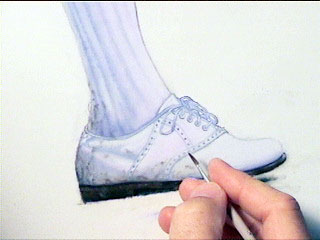
To insure accuracy in my paintings, I often acquire the same items used by my subject. Here, the golf shoe like the one worn by Payne Stewart, becomes an important reference for me.
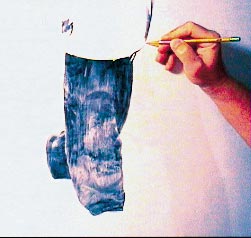
In the photo at right, I am drawing the image on the panel with pencil before going over it with my first pass of paint. I have started with Payne's "plus fours" and torso. There is usually a long break between my major paintings due to print production and the signing and numbering of the prints of my previous painting-in addition to the time for researching the subject for the new painting. Therefore, I don't like beginning a painting on such crucial areas as the face until I once again "warm up" to the drawing and painting process
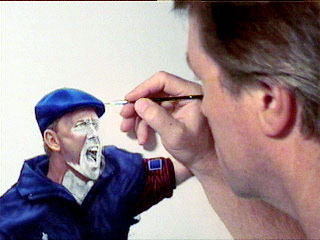
I'm encouraged to see the image of Payne really taking shape now. At this point, I'm going to move on to other areas of the painting. I'll have plenty of time to study what all needs to be done to the figure and I'll come back to it to do fine tuning and touch up work.
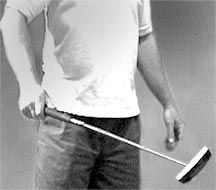
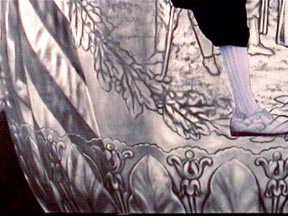
At this point in the project, the underdrawing is complete. Most of the decisions have been made concerning the composition of the painting and now I will get on with the delicate task of applying the remainder of paint to the panel.
Here, I'm drawing in the detail of the trophy with a pencil before the paint is applied.
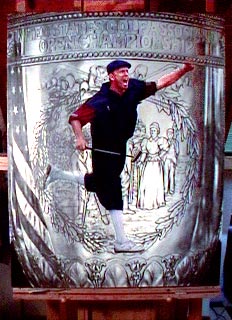
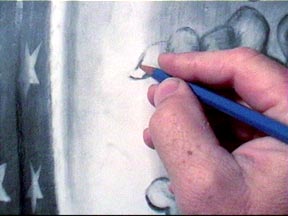
Finished area of the pencil uderdrawing.
I borrowed a "SeeMore" brand putter, the kind like Payne used in winning the 99 U.S. Open. At right is one of the many reference photos I will take in my studio for reconstructing the scene of Payne's reaction to the winning putt-which will be portrayed as a reflected image in the U.S. Open trophy.
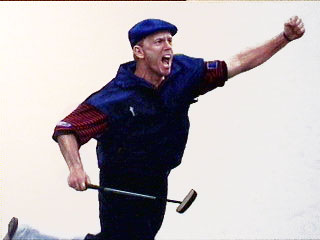
Most of my time painting is spent with small brushes like this little 10-0 sable. It explains why my average painting takes from 300 to 500 easel hours to complete.

This close-up of the shoe is a good example of why I sometimes need more information than that available from a photograph. When the painting is near completion, I'll go back and fine tune each element to give the painting a super-realistic appearance.
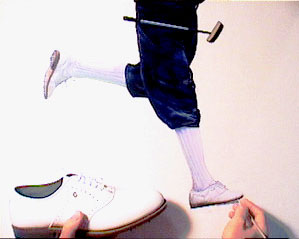
--Daniel A. Moore
(c)2001 New Life Art, Inc.